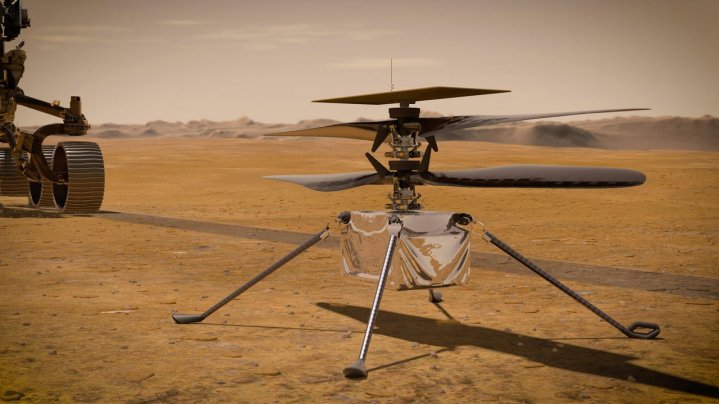
As much as the public has embraced the Mars rover Perseverance, people’s imaginations have been perhaps most captured by the rover’s plucky little sidekick, the helicopter Ingenuity. This tiny helicopter is set to become the first aircraft ever to fly on another planet, and now NASA has announced that it plans to begin Ingenuity’s test flights in the first week of April, depending on vehicle positioning and other details.
The reviews of the integration between the rover and the helicopter have been completed and the team at NASA’s Jet Propulsion Laboratory (JPL) is performing final checkouts to make sure the system is ready.
In a recent update on the helicopter from JPL’s Farah Alibay, Perseverance integration lead for Ingenuity, and Tim Canham, Ingenuity operations lead, the team confirmed they are almost ready to launch Ingenuity on its first flight. “Right now, the helicopter is still attached to the rover,” Canham said. “We’re keeping it warm and fed,” he said, by charging the batteries, and the team is working on selecting a final site for the first flight test.
Choosing a location for the test flight requires careful consideration. The team is looking for the perfect flat area which doesn’t have too many rocks which could provide a hazard, but where the surface does have enough texture that the navigation cameras can use these fluctuations to find their way.
And once a site is selected and the mission begins, there are several complex procedures that need to occur to get Ingenuity ready to fly. “Once we start the helicopter mission, the first thing that we have to do is drop the debris shield,” Alibay explained. This shield protected the delicate parts of the helicopter from the heat and vibration of the Mars landing. “Then we’re going to travel several days to the helicopter drop-off location. Once we get there, it’s actually going to take us about a week to deploy the helicopter.”
It takes a while for the helicopter to be deployed due to its positioning within the rover. It’s currently tucked up snugly and horizontally beneath the rover and it will need to be carefully deployed in a number of steps, each of which needs to be confirmed before moving onto the next. Then it can finally be separated from the rover, and the rover will drive away to a safe distance leaving Ingenuity free to fly.
NASA will likely release more details about the planned test flight next week, and we’ll keep you updated on the plans for little Ingenuity’s first big mission.
Editors' Recommendations
- NASA video maps all 72 flights taken by Mars Ingenuity helicopter
- NASA needs a new approach for its challenging Mars Sample Return mission
- NASA, Boeing delay Starliner’s first crewed flight again
- Relive Mars rover’s spectacular landing exactly 3 years ago
- NASA is looking for volunteers for yearlong simulated Mars mission




